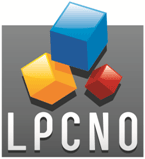Directed assembly of magnetic nanoparticles assisted by «soft lithography»
NANOSCIENCE

Lab: LPCNO
Duration: 5 months full-time internship
6 months full-time internship
Latest starting date: 01/03/2024
Localisation: Laboratory of Physics and Chemistry of Nano-Objects - Physics department - INSA
The student will be working in the chemistry laboratory, the Nanotech clean room and the magnetometry service.
Supervisors:
Lise-Marie LACROIX lmlacroi@insa-toulouse.fr
Etienne Palleau palleau@insa-toulouse.fr
This research master's degree project could be followed by a PhD
Work package:
The fabrication and integration of modular magnetic materials can meet the needs of major transitions (health,1 energy,2 digital3 ). However, this integration remains a major technological challenge for the deployment of (bio)sensors, precision actuators or RF components that consume less energy. The LPCNO NCO team recently patented an innovative manufacturing process based on a "bottom-up" approach, in which small particles are assembled, like in a building set, to create a new material that cannot be accessed directly.4 The key point for the assembly is the presence of magnetic field gradients that attract the particles locally. These strong magnetic gradients are up to now generated by nickel blocks, electroplated on the substrate, which become magnetized under an external magnetic field (Figure 1a). However, this approach is expensive, as the blocks are custom deposited and cannot be reused, moreover nickel is now classified as a critical material by the European Union.
The aim of this 6-month multidisciplinary internship will be to develop a more durable process using removable blocks based on an iron/resin composite. These blocks will be fabricated in the form of magnetic stamps (Figure 1b), using a low-tech approach and/or additive 3D printing.
The intern will be in charge of 1) the design of the blocks using finite element simulations to optimize the magnetic field gradientinduced, 2) the fabrication and the characterization of the stamps, using optical and electronic microscopy, and magnetometry ; and 3) the magnetophoresis-driven assembly process. The stamps must be compatible with the organic solvents used in the assembly process and allow the release of the NP assemblies formed. For that, chemical surface treatments and sacrificial interfaces may be needed and will be studied uring the internship.

References:
(1) Schrittwieser, S. et al. Homogeneous Protein Analysis by Magnetic Core–Shell Nanorod Probes. ACS Appl. Mater. Interfaces 2016, 8 (14), 8893–8899. https://doi.org/10.1021/acsami.5b11925.
(2) Gutfleisch, O.et al. Magnetic Materials and Devices for the 21st Century: Stronger, Lighter, and More Energy Efficient. Adv. Mater. 2011, 23 (7), 821–842. https://doi.org/10.1002/adma.201002180.
(3) Silveyra, J. M. et al. Soft Magnetic Materials for a Sustainable and Electrified World. Science 2018, 362 (6413), eaao0195. https://doi.org/10.1126/science.aao0195.
(4) Moritz, P. et al. Magnetophoresis-Assisted Capillary Assembly: A Versatile Approach for Fabricating Tailored 3D Magnetic Supercrystals. ACS Nano 2021, 15 (3), 5096–5108. https://doi.org/10.1021/acsnano.0c10215.
Areas of expertise:
Magnetic material, Nanoparticles, Soft-lithography, Additive 3D printing
Required skills for the internship:
Applicant’s profil : Physics, Nanotechnologies or Material Science background. Curiosity and scientific rigor. Good communication and writing skills. Experience/Knowledges in microfabrication and magnetism would be appreciated.
